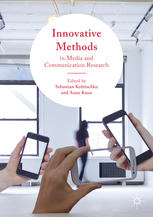

Most ebook files are in PDF format, so you can easily read them using various software such as Foxit Reader or directly on the Google Chrome browser.
Some ebook files are released by publishers in other formats such as .awz, .mobi, .epub, .fb2, etc. You may need to install specific software to read these formats on mobile/PC, such as Calibre.
Please read the tutorial at this link. https://ebooknice.com/page/post?id=faq
We offer FREE conversion to the popular formats you request; however, this may take some time. Therefore, right after payment, please email us, and we will try to provide the service as quickly as possible.
For some exceptional file formats or broken links (if any), please refrain from opening any disputes. Instead, email us first, and we will try to assist within a maximum of 6 hours.
EbookNice Team

Status:
Available0.0
0 reviewsThis collection reflects the need for suitable methods to answer emerging questions that result from the ever-changing media environment. As media technologies and infrastructures become inseparably interwoven with social constellations, scholars from varying disciplines increasingly investigate their characteristics, functioning, relevance and impact – facing new methodological challenges as well as opportunities. Innovative Methods in Media and Communication Research engages with the substantial need to rethink established methods to research acute changes in the media environment. The book gathers chapters dedicated to the multifacetedness and liveliness of emerging methods – from lifelogging and ethnography to digital methods and visualization – while embedding them in the rich history of interdisciplinary empirical research. Innovation here is a call for widening and rethinking research methods to stimulate a sophisticated debate on and exploration of contemporary methodological approaches for scholars at various levels of academic life. Accompanied by introductory sections of prominent scholars, the majority of empirical studies gathered in this volume are accomplished through early-career scholars who strive to advance cutting-edge and in parts even provocative approaches for the study of media and communication. The book's four sections on Materiality, Technology, Experience and Visualization are introduced by Saskia Sassen, Noortje Marres, Sarah Pink and Lev Manovich.